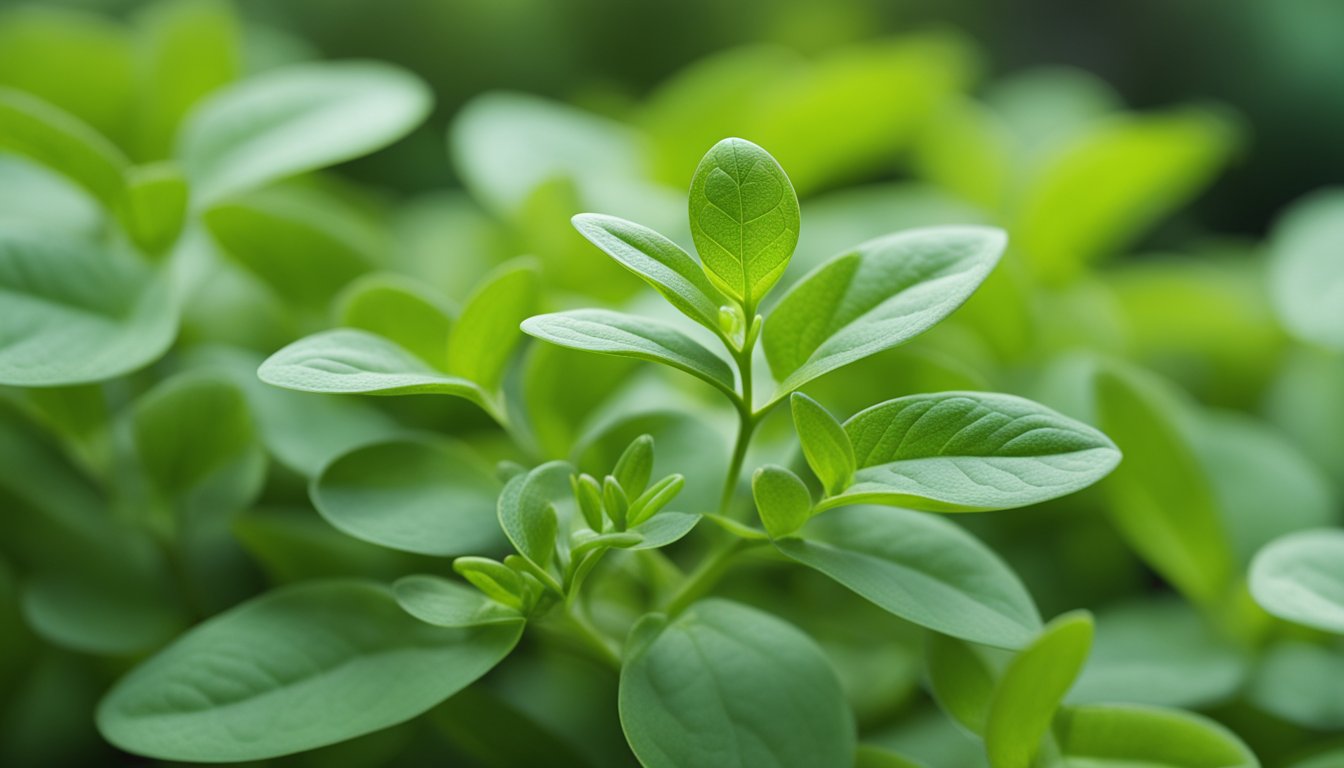If you’re on the hunt for a stunning yet low-maintenance houseplant, look no further than Callisia repens. This charming trailing plant, often called the turtle vine or inch plant, boasts vibrant green leaves adorned with striking purple undersides. It’s not just a feast for the eyes; it’s also incredibly resilient, thriving in various light conditions and requiring minimal care.
Imagine transforming your living space with this lush beauty that effortlessly cascades from shelves or hanging baskets. Whether you’re a seasoned plant parent or just starting out, Callisia repens is the perfect addition to your collection. Let’s dive into what makes this plant so special and how you can care for it to ensure it flourishes in your home.
Overview of Callisia Repens
Callisia repens, commonly known as the turtle vine, captivates with its lush green leaves and unique purple undersides. This plant thrives indoors, offering vibrant foliage that adds life to any space. Its trailing nature makes it perfect for cascading down shelves or spilling from hanging baskets.
I find it remarkable how well the turtle vine handles varying light conditions. It flourishes in both bright, indirect light and low-light environments. Even if you forget to water it occasionally, it’ll bounce back. This resilience makes it an ideal choice for those new to plant care.
Caring for this charming plant is straightforward. I’ll mention a few key pointers. Keep the soil moist but not soggy. Watering when the top inch feels dry works well. Fertilize monthly during the growing season with a balanced fertilizer to promote healthy growth.
I love how versatile the turtle vine is for interior design. Whether styled in a pot or as a hanging plant, it suits different décor themes. This adaptability, combined with its low-maintenance nature, boosts its appeal to all plant lovers, novices, and experts alike.
Benefits of Callisia Repens

Callisia repens, or turtle vine, offers a range of benefits that enhance my living space and my well-being. This charming plant not only beautifies my home but also provides practical advantages.
Health Benefits
Turtle vine contributes to improved indoor air quality. This plant absorbs toxins and purifies the air, creating a fresher environment. It enhances mood and reduces stress, fostering a calm atmosphere in any room. Studies suggest that indoor plants can boost cognitive function, so having turtle vine around might just make me a little smarter. Who wouldn’t want that?
Environmental Benefits
Callisia repens requires minimal water and care. This low-maintenance nature conserves resources, making it an eco-friendly choice. The plant thrives under various light levels, so I don’t waste energy providing it with extra light. Its growth encourages biodiversity, supporting beneficial insects and microorganisms in my home garden. With turtle vine, I’m not just brightening my space; I’m also contributing to a healthier planet.
Care Tips for Callisia Repens
Caring for your Callisia repens, also known as turtle vine, is straightforward and rewarding. This resilient plant thrives with a few simple steps.
Light Requirements
I place my turtle vine in bright, indirect sunlight. The plant enjoys this type of light but can tolerate lower levels as well. Too much direct sun can scorch its lovely leaves, while too little can hinder growth. Observing its leaves is key. If they start to fade, it’s time to reevaluate its lighting situation.
Watering Guidelines
I check the soil moisture regularly for my turtle vine. Water whenever the top inch feels dry. Keeping the soil moist is vital, but sogginess leads to root rot. A gentle hand with watering works wonders. If I happen to forget, that’s okay! This plant is forgiving and can bounce back from short periods of neglect.
Soil and Fertilization
I use a well-draining potting mix for my Callisia repens. A blend featuring peat moss works well. It encourages healthy growth while preventing water retention. During the growing season, I apply a balanced fertilizer once a month. This feeding keeps my turtle vine vibrant and lush, enhancing its natural beauty. A little nourishment goes a long way in ensuring your plant flourishes.
With these care tips, my Callisia repens thrives, adding charm to my space effortlessly.
Common Pests and Problems

Callisia repens, known as the turtle vine, can encounter a few pesky issues. Identifying these problems early ensures your plant stays healthy and vibrant.
Identifying Pests
Common pests that affect the turtle vine include spider mites, aphids, and mealybugs. Spider mites often appear as tiny specks on the undersides of leaves. I can usually spot them by looking for webbing. Aphids tend to cluster on new growth, bringing a sticky residue. Mealybugs resemble small cotton swabs, clinging to leaf joints and stems. Always examine your plant regularly to catch these nuisances before they multiply.
Solutions and Prevention
Dealing with pests on the turtle vine is manageable. First, if I see a small infestation, I wipe the leaves with a damp cloth to remove bugs and webs. For larger outbreaks, a gentle spray of neem oil or insecticidal soap works wonders. These treatments are safe and effective. Maintaining good air circulation around the plant also keeps pests at bay. Proper watering and healthy soil strengthens the plant’s defenses, making it less appealing to insects.
Before You Go – Callisia Repens
Callisia repens truly stands out as a remarkable addition to any indoor space. Its stunning foliage and low-maintenance nature make it a favorite among plant enthusiasts like me. I appreciate how it effortlessly adapts to different lighting conditions while enhancing the beauty of my home.
Caring for this plant is straightforward and rewarding. With just a little attention to watering and light, it thrives beautifully. Plus, the air-purifying benefits it offers create a healthier environment, adding to its charm.
Whether you’re a seasoned plant owner or just starting your indoor garden journey, Callisia repens is a delightful choice that brings life and vibrancy to any room. I can’t recommend it enough! Don’t forget to add The Herb Prof to your favorites so you don’t miss out on future articles.
References – Callisia Repens
Little Herb Encyclopedia, by Jack Ritchason; N.D., Woodland Publishing Incorporated, 1995
The Ultimate Healing System, Course Manual, Copyright 1985, Don Lepore
Planetary Herbology, Michael Tierra, C.A., N.D., Lotus Press, 1988
Handbook of Medicinal Herbs, by James A. Duke, Pub. CRP Second Edition 2007
The Complete Medicinal Herbal, by Penelope Ody, Published by Dorling Kindersley
Check the Following Articles
Why People Are Boiling 3 Bananas Before Bed for Sleep
Hydrangea Fall Care Tips for a Vibrant Garden Next Spring
Growing a Leucothoe Bush in Your Garden
Granulated Garlic: Convenient Spice for Flavorful Cooking
Frequently Asked Questions – Callisia Repens
What is Callisia repens?
Callisia repens, commonly known as the turtle vine or inch plant, is a low-maintenance houseplant recognized for its attractive green leaves with purple undersides. It’s ideal for both beginners and experienced plant owners, adding beauty to living spaces with its cascading growth habit.
How do I care for Callisia repens?
To care for Callisia repens, keep the soil evenly moist but not soggy. Water when the top inch of soil feels dry, and fertilize monthly during the growing season with balanced fertilizer. Place the plant in bright, indirect light to thrive, but avoid direct sunlight.
Can Callisia repens thrive in low light?
Yes, Callisia repens is versatile and can thrive in various lighting conditions, including low light. However, for optimal growth and vibrant foliage, it’s best to place it in bright, indirect light whenever possible.
What are the benefits of Callisia repens?
Callisia repens helps improve indoor air quality by absorbing toxins and purifying the air. Additionally, it fosters a calm atmosphere, enhances cognitive function, and is eco-friendly due to its low water and care requirements.
How can I manage pests on Callisia repens?
Common pests for Callisia repens include spider mites, aphids, and mealybugs. To manage infestations, wipe leaves with a damp cloth or use neem oil for larger outbreaks. Maintaining good air circulation and healthy soil also strengthens the plant’s defenses against pests.

